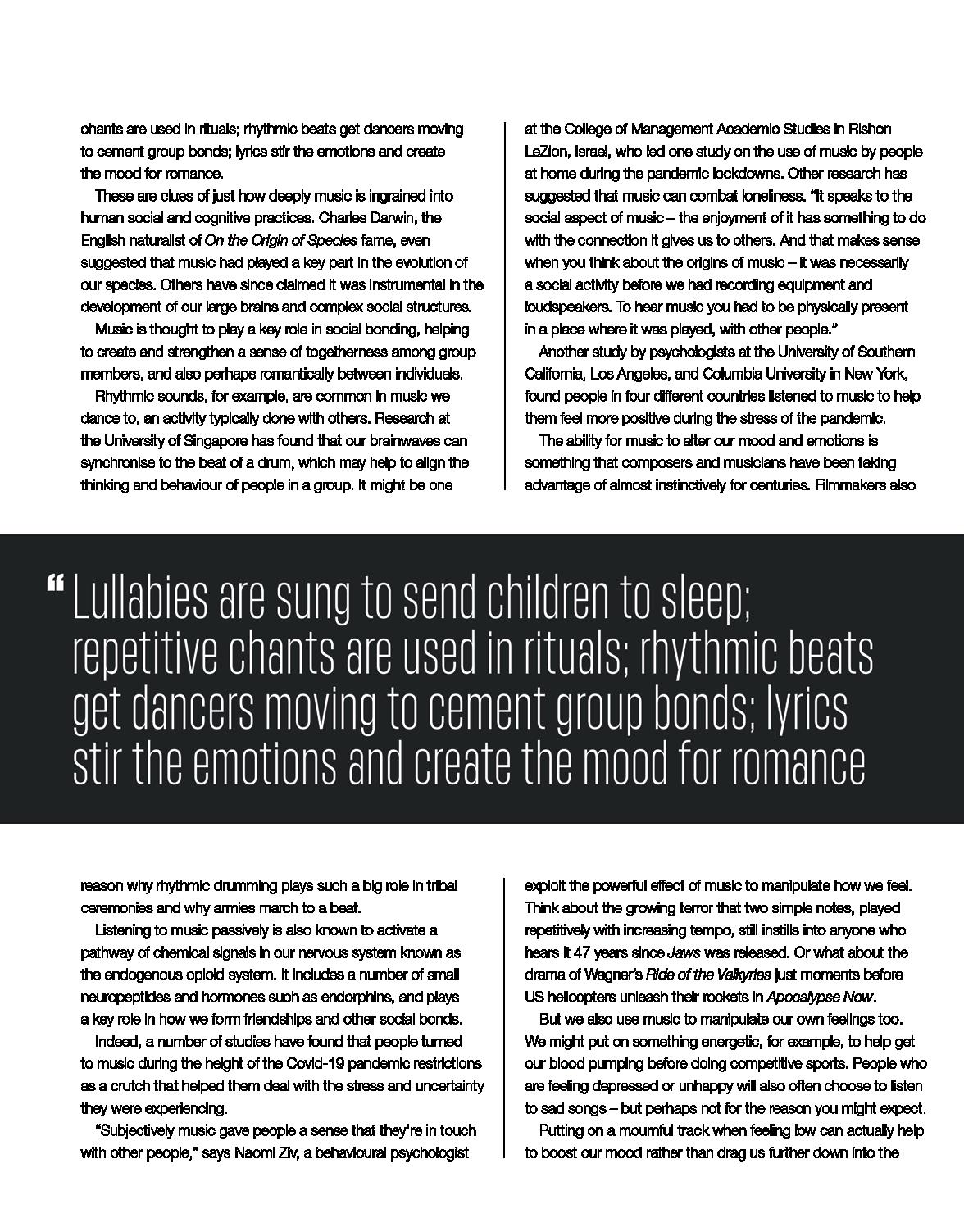
4 minute read
needlepoint
Elsewhere in this issue, there are references to the cartridges that we have available from Linn, Rega and Vertere. What about the more ‘off piste’ choices? We certainly have quite a few to choose from.
Lyra has the distinction of being the first high end MC cartridge brand that I took on when starting Signals. Our affection for them has never dimmed and the knowledge that they have been makers of some of the most engaging Linn cartridges has only added to this.
Advertisement
We’ve seen increased willingness for people to spend serious amounts of money on cartridges and the Lyra Etna SL is an absolute joy on Linn LP12, Nottingham or other high end turntables.
It still surprises me that we have choice to offer (and to demonstrate) even at prices north of £6000.
Supply issues have become a very real problem, though, and they have affected all manufacturers to some degree. Despite their impact, Lyra is a small operation. Perhaps it’s just this that’s making backlogs take longer to clear, but they seem to have been particularly badly affected. As of spring 2023, lead times are still being measured in (several) months.
Kiseki have been impacted too, possibly even worse than Lyra. How frustrating it is to have favourite products that you simply cannot access. Customers who have had a little accident or simply want to upgrade are facing stop-gap measures or a complete change of direction.
It’s heartening to report that Dynavector seem to have been bucking the trend. Pear Audio, their UK importer, has managed to keep stocks available with quite breathtaking efficiency. Their excellent P-75 Mk4 phono stage is also on demonstration.

– if you can call it that – is a lack of
On audition however, most people lucky enough to afford this will adore it.”
Rather than drizzle on about what we cannot supply, it probably makes more sense to discuss what we can. Most Dynavector models have been revised over the past couple of years and improvements have been very worthwhile.
The entry level 10X5 MkII, a high output moving coil that could be used into Moving Magnet phono stages, is now available in a low output version too. Both types have struck us as being a significant step up from the original.

Above this, the DV20X2 remains a popular choice and, yet again, it has been improved in MkII form. Available in both low and high outputs. As with the 10X5, these have worked well on a variety of decks from both Rega and Linn.
The venerable 17D3 has become the 17DX and, again, it offers proper improvements in terms of dynamics, speed and refinement. This seems to be primarily attributed to the new and remarkably short (1.7mm) diamond cantilever, but it really is a thorough re-design with a new, if similar looking, body. Again, very compatible with a wide range of decks.
The XV-1, pictured above, is at the upper end of Dynavector’s price range. There are two versions, S + T with the former being over £4k and the latter over £6k.
We have an XV-1 S in stock for demonstration, and can acquire an XV-1 T should it be required.
Is there such a thing as gratuitous use of graphics? That picture of a Chord Étude being smashed out of a block of ice caught my eye when looking through Chord’s image resources. In any case, Étude is a good place to start.

Chords most recent developments have been in the sphere of their amplification and the Étude was the first of their new breed of power amplifier design. It’s from their Choral range and has impressed us greatly, whether being fed directly from the (matching) Dave DAC and / or Prima pre-amp. In fact we recently added the, again matching, Symphonic phono stage to our demonstration collection. Étude’s performance belies the small packaging. It’ll punch out 150 watts into 4 ohms and can be bridged into a single monobloc unit.
More to the point, it sounds lovely. Fast, tonally rich and engaging. I’ve been known to nick one for home use, so I know it well. It’s also very portable!
This same technology is used on the new Ultima range of power amplifiers. There are three monobloc designs and two stereo. We have the smallest, Ultima 6 stereo and the Ultima 3 monos, again the smallest, with just 480 watts per channel (8 ohm load).
You could say that the differences between the Ultima power amps is more about quantity than quality but there is a certain quality that comes from having abundance of quantity. Must get some bigger oines!
Subjectively, all are more powerful than their rating. All have the ability to retain composure when being driven quite hard, and the subjective impression is that things are less loud than the really are.
None of our loudspeakers seem to give them any issues and both ATC and Dynaudio seem well matched to their (really quite neutral) characteristics.
Chord’s latest arrival is the Ultima Pre 3. This offers stripped back facilities over the rather over-achieving and potentially confusing Pre 2 and offers very similar sound quality.
Chord’s affection for using colours over boring stuff like input names appears here, so there is a near-vertical initial learning curve. Once you’ve figured it out, it’s a well priced beautifully built preamp.
The combined sound quality with the power amplifiers is most definitely-class leading. With the right ancillaries, scale, depth and sheer musicality is impressive.
Given that Chord DACs such as Dave and Hugo TT2 have balanced outputs and can physically drive the power amplifiers, or active loudspeakers, come to that, you may wonder what the point is of having a line level pre-amp.
For a start, and most obviously, it allows for more source components such as a turntable. What it also does is make the power amps sound bigger, more expansive and more dynamic. It’s not a subtle thing, although it definitely unleashes subtleties.
Beyond this, the DACs, the scaler, Huei the phono stage and Anni the microscopic amp-cum-headphone amp are all on site ready to amuse you.
We even have some new stock of certain items, so lead times could be quick!












